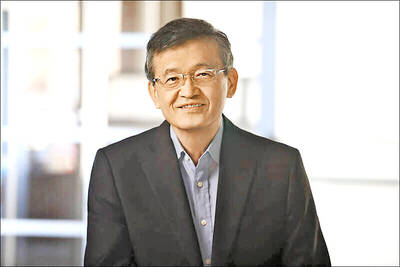A group of shepherds amble slowly down the main thoroughfare of Buranest, a tiny village in a far-flung corner of northern Ethiopia.
The town square lies empty, as does the school, while sheep and cows graze peacefully in the overgrown grass.
Buranest is a model town, a “real-life experiment” that a team of Ethiopian and European urban planners hope can provide crucial lessons for the country’s future.
Founded in 2010 by Franz Oswald of Nestown Group and experts from Swiss university ETH Zurich, the nascent town is a paragon of sustainability.
It features self-built homes that harvest rainwater, workshops for light industry and craft, local eucalyptus trees to supply wood for building and irrigated fields for growing crops.
However, for seven years Buranest struggled.
Its model homes are still unoccupied, and local farmers remain suspicious.
“At the beginning, most locals did not like the idea,” Mestawet Libokemkem, project coordinator from the local government, told the Thomson Reuters Foundation. “They feared their land would be taken away from them.”
Urbanization, and the task of bring jobs and infrastructure to the countryside, is central to the government’s future agenda.
Ethiopia’s urbanization rate is estimated to be between 4 percent and 6 percent per year, while the population of the capital, Addis Ababa, is expected to double to more than 8 million over the course of the next decade.
“When we started, we thought we could change the world with our plans, but the farmers are very suspicious, very skeptical,” said Fasil Giorghis, an architect based in Addis Ababa and a lead researcher on the Buranest project.
Buranest, in the northern Amhara Region, is now gradually coming alive. However, its past troubles have added significance as a new plan to build 8,000 new towns across the country gathers momentum.
Whether this dream can become reality depends on whether the kind of problems faced by Buranest can be successfully overcome.
Relentless growth is putting enormous pressure on Addis Ababa’s creaking infrastructure, with an estimated 500,000 homes needed to meet demand and as much as 80 percent of residents living in slums, according to the UN Human Settlements Programme, the UN’s agency in charge of sustainable urban development.
Efforts to expand Addis Ababa, which resulted in the displacement of farmers from its surrounding area, sparked anti-government protests in 2014, culminating in the imposition of a nine-month state of emergency last year.
Ethiopia’s government, which rose to power in 1991 after more than a decade of civil war, has long sought to manage such pressures by curbing the flow of people from the countryside to the capital.
For instance, state ownership of land makes it difficult to sell family plots and makes relocating to the city harder.
The plan to build 8,000 small towns is the latest manifestation of these efforts, reflecting a desire to keep people in the countryside “by bringing urbanization to them,” said Dirk Donath of the University of Weimar in Germany.
Donath is part of a team developing the project in partnership with the Ethiopian Institute of Architecture, Building Construction and City Development.
The project, known as “Rural-to-Urban Transformation,” is the brainchild of Tsedeke Woldu, a wealthy Ethiopian businessman and housing developer, and Bereket Simon, an influential Ethiopian politician and former policy adviser to the prime minister.
It takes inspiration from a 2015 government growth and transformation plan, which included planning 8,000 “rural development centers” by 2020.
“In the past, we were very much focused on promoting agriculture, but now we want to have more towns all across the country,” said Yinager Dessie, minister of national planning and one of the authors of the plan.
Each village, or “rural development center,” would be provided with a school, health center, housing and government offices.
Farmers would be encouraged to migrate from the surrounding area to take up jobs in light industry, urban agriculture and construction, among others.
In Ethiopia, a town must have a population of more than 2,000 people, and more than 50 percent of the population must earn a living from something other than agriculture, in order to claim urban infrastructure and services from the regional government.
This threshold is to soon be lowered to 500 people to help jump-start the urbanization process, said Zegeye Cherenet, an Ethiopian urban planner at the Ethiopian Institute of Architecture, Building Construction and City Development.
Woldu hopes to start work on 13 pilot towns across the country early next year, mostly with his own finances.
“I want to transform them from backwards villages into modern towns,” he told the Thomson Reuters Foundation.
However, the problems encountered by Buranest’s founders are expected in these towns, too.
“We have learned a lot from Buranest,” Cherenet said. “It was a laboratory, and we learned that the most difficult part of this kind of campaign is mobilizing people to live in it.”
“People are very averse to this,” Woldu said. “They are definitely suspicious. They say things like: ‘They wouldn’t come all the way here if it wasn’t for our land.’”
In Buranest, local farmers believed communal grazing land would be used for one of the many horticulture businesses that have sprung up across Ethiopia over the past decade.
Like many in the Horn of Africa country, they have been scarred by its checkered history of forced resettlement and so-called “villagization.”
Ethiopians endured failed attempts to resettle millions in collectivized villages under the communist regime known as the Derg, in power from 1974 until 1991.
The current government, led by the Ethiopian People’s Revolutionary Democratic Front, launched its own resettlement scheme in 2010.
It moved tens of thousands people in the western Gambela Region into purpose-built villages before closing the program in 2013 following criticism by rights groups.
More recently, the outbreak of mass protests against large-scale land acquisitions and the expansion of Addis Ababa has forced the government to tread more cautiously on issues concerning land.
“The problem is when we create urban centers, we have to take land and pay compensation to the farmers,” Dessie said. “Expansion will definitely take a lot of land — and these days farmers ask for a lot of compensation.”
Despite the obstacles, local authorities are selecting poor farmers from the surrounding area to live in Buranest’s model houses, more of which are now under construction.
More than 50 farmers have come together to form a housing cooperative and are receiving bank credit to start building their own.
The school should soon be operational, too, according to Giorghis, and new residents have arrived in the area and set up shops along the main road, anticipating further expansion of the town.
“The farmers have changed their attitude,” Libokemkem said.

Intel Corp chief executive officer Lip-Bu Tan (陳立武) is expected to meet with Taiwanese suppliers next month in conjunction with the opening of the Computex Taipei trade show, supply chain sources said on Monday. The visit, the first for Tan to Taiwan since assuming his new post last month, would be aimed at enhancing Intel’s ties with suppliers in Taiwan as he attempts to help turn around the struggling US chipmaker, the sources said. Tan is to hold a banquet to celebrate Intel’s 40-year presence in Taiwan before Computex opens on May 20 and invite dozens of Taiwanese suppliers to exchange views

Application-specific integrated circuit designer Faraday Technology Corp (智原) yesterday said that although revenue this quarter would decline 30 percent from last quarter, it retained its full-year forecast of revenue growth of 100 percent. The company attributed the quarterly drop to a slowdown in customers’ production of chips using Faraday’s advanced packaging technology. The company is still confident about its revenue growth this year, given its strong “design-win” — or the projects it won to help customers design their chips, Faraday president Steve Wang (王國雍) told an online earnings conference. “The design-win this year is better than we expected. We believe we will win

Chizuko Kimura has become the first female sushi chef in the world to win a Michelin star, fulfilling a promise she made to her dying husband to continue his legacy. The 54-year-old Japanese chef regained the Michelin star her late husband, Shunei Kimura, won three years ago for their Sushi Shunei restaurant in Paris. For Shunei Kimura, the star was a dream come true. However, the joy was short-lived. He died from cancer just three months later in June 2022. He was 65. The following year, the restaurant in the heart of Montmartre lost its star rating. Chizuko Kimura insisted that the new star is still down

While China’s leaders use their economic and political might to fight US President Donald Trump’s trade war “to the end,” its army of social media soldiers are embarking on a more humorous campaign online. Trump’s tariff blitz has seen Washington and Beijing impose eye-watering duties on imports from the other, fanning a standoff between the economic superpowers that has sparked global recession fears and sent markets into a tailspin. Trump says his policy is a response to years of being “ripped off” by other countries and aims to bring manufacturing to the US, forcing companies to employ US workers. However, China’s online warriors